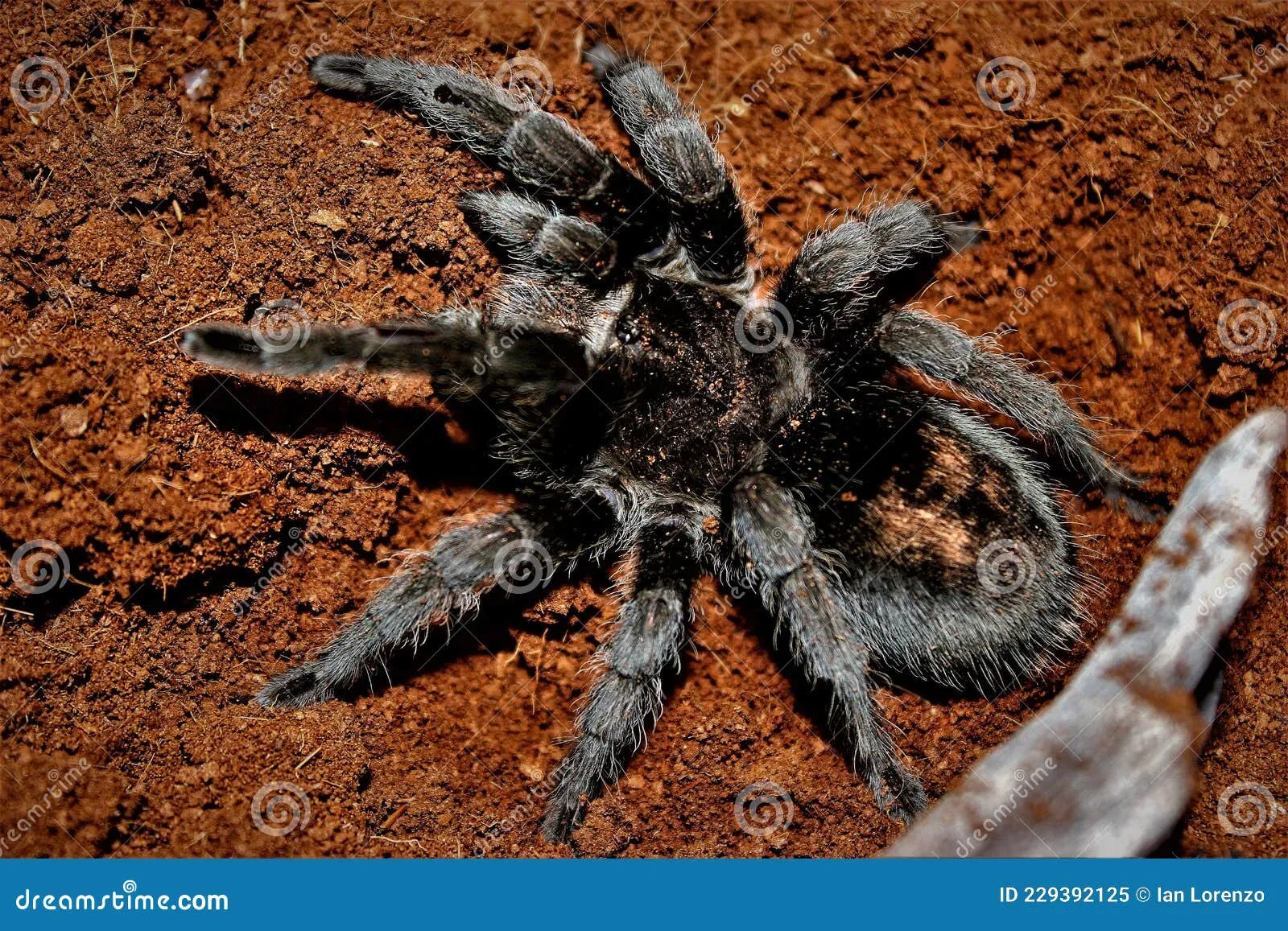Brazilian Black Tarantula: Overview
The Brazilian Black Tarantula (Grammostola pulchra) is a captivating and popular pet tarantula. Known for its striking appearance and relatively docile temperament, this species has become a favorite among both novice and experienced arachnid enthusiasts. This comprehensive guide will provide you with all the necessary information to successfully care for your Brazilian Black Tarantula, ensuring its health and well-being. From understanding their natural habitat to setting up their enclosure and providing proper nutrition, we’ll cover everything you need to know to create a thriving environment for your pet. This guide will also delve into the important aspects of handling, health, and even breeding, empowering you to become a responsible and knowledgeable tarantula keeper. Owning a Brazilian Black Tarantula is a rewarding experience, and with the right knowledge, you can enjoy the fascinating world of these beautiful creatures.
Appearance and Characteristics
The Brazilian Black Tarantula is aptly named, boasting a stunning, velvety black coloration that covers its entire body, including its legs, carapace, and abdomen. This uniform color makes it a truly elegant and visually appealing tarantula. The absence of any significant markings or patterns further enhances its sleek appearance. They possess a robust build with thick legs and a relatively large size, contributing to their impressive presence. Their chelicerae (mouthparts) are powerful, used for capturing and subduing prey. The pedipalps, which are used for sensory purposes, are also quite prominent. The overall appearance is one of both beauty and strength, making them a sought-after species among tarantula keepers. Their coloration is consistent across different ages, though the intensity might vary slightly depending on the individual and molting cycles.
Size and Lifespan
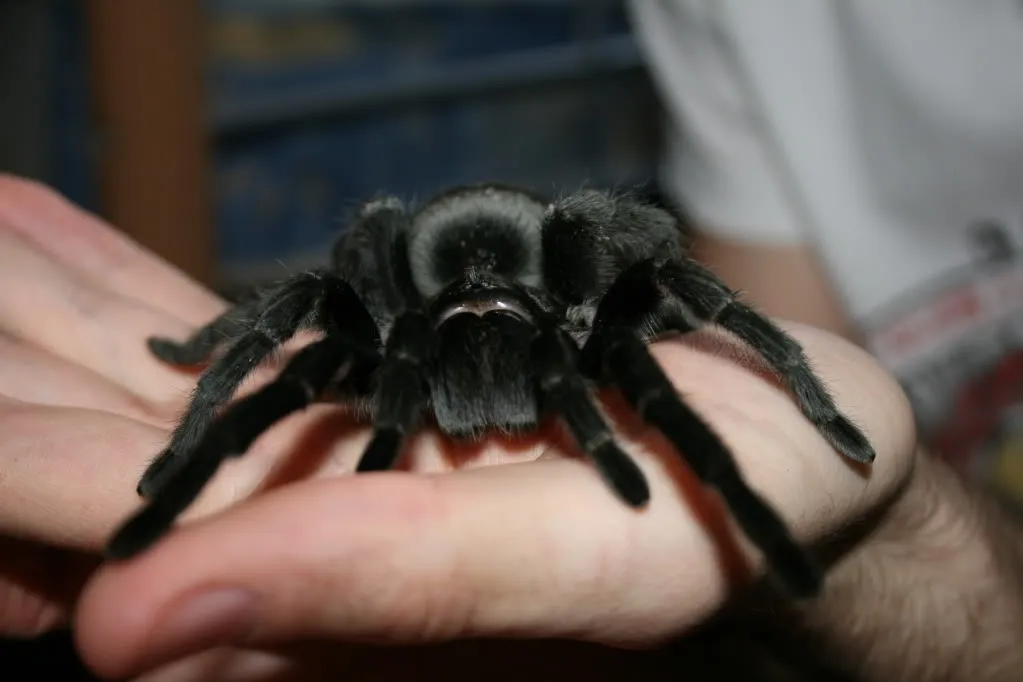
Brazilian Black Tarantulas are a relatively large species, with females typically reaching a leg span of up to 7-8 inches (18-20 cm) when fully grown. Males tend to be slightly smaller. Their growth rate is moderate, and they can take several years to reach their full size. One of the most appealing aspects of keeping a Brazilian Black Tarantula is its impressive lifespan. Females can live for an exceptionally long time, often 20 years or more, making them a long-term companion for any pet owner. Males, however, have a shorter lifespan, typically living for 5-7 years after reaching maturity. The longevity of females makes them particularly popular, as they represent a significant commitment and offer years of enjoyment. Proper care, including a suitable environment and diet, is crucial to maximize their lifespan and ensure their well-being.
Choosing Your Brazilian Black Tarantula
Where to Buy
Finding a healthy Brazilian Black Tarantula is crucial. Reputable breeders are the best source, as they typically prioritize the health and well-being of their tarantulas. Look for breeders with positive reviews and a good reputation within the tarantula-keeping community. Local reptile or exotic pet stores can also be a good option, but ensure the store is knowledgeable about tarantula care and can provide information on the tarantula’s origin and health. Online marketplaces and forums can offer a variety of options, but exercise caution. Always research the seller thoroughly and ask for photos and details about the tarantula’s condition. Consider attending reptile shows or expos, where you can meet breeders directly and inspect the tarantulas in person. Prioritize purchasing from sources that provide health guarantees and are willing to answer your questions.
Things to Consider
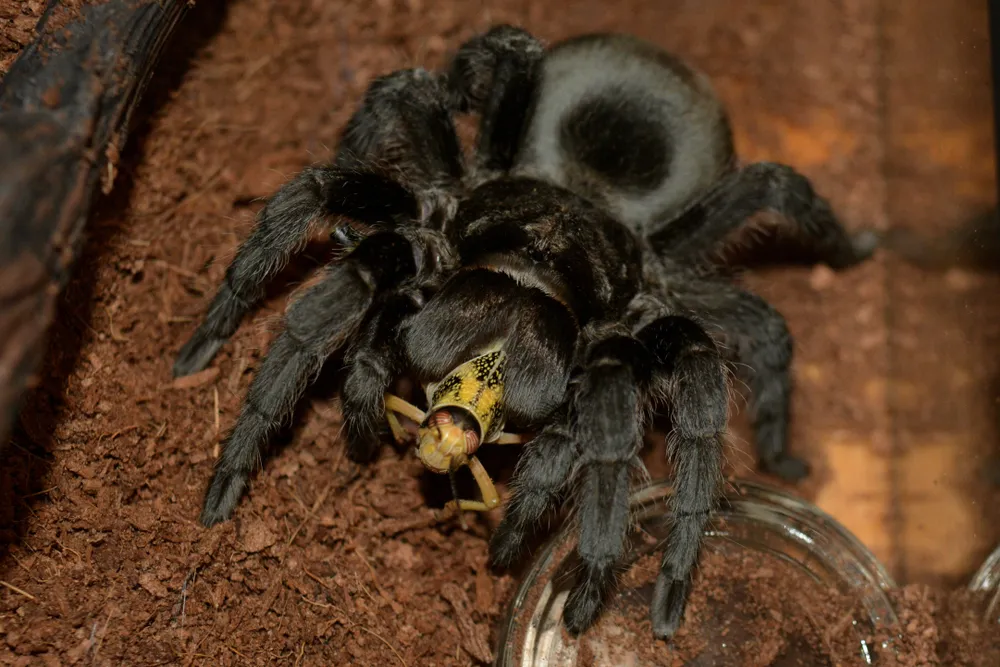
Before acquiring a Brazilian Black Tarantula, consider the long-term commitment involved. These tarantulas can live for many years, so you must be prepared to provide consistent care throughout their lifespan. Research the species thoroughly to understand their specific needs, including their environmental requirements, feeding habits, and potential health issues. Ensure you have the necessary space for the enclosure and the ability to maintain a stable temperature and humidity level. Consider the potential costs associated with tarantula ownership, including the initial purchase price, enclosure setup, substrate, food, and any potential veterinary care. Be aware that handling tarantulas is generally discouraged unless necessary, as it can stress the animal and potentially lead to bites. Finally, ensure that tarantula ownership is legal in your area, as some locations have restrictions on exotic pet ownership.
Housing Your Brazilian Black Tarantula
Enclosure Size and Type
The enclosure for your Brazilian Black Tarantula should be appropriately sized to provide adequate space and comfort. For adults, a terrarium that is 10-20 gallons is generally sufficient, with dimensions of approximately 12x12x12 inches or larger. The enclosure should be made of glass or clear plastic, allowing for easy viewing of your pet. Ensure the enclosure has a secure, well-fitting lid to prevent escape. Avoid enclosures that are too tall, as tarantulas can injure themselves if they fall from a significant height. Ventilation is essential for maintaining air quality, so ensure the enclosure has appropriate ventilation holes, but they should be small enough to prevent the escape of feeder insects. Consider the tarantula’s terrestrial nature when selecting the enclosure; a wider, rather than taller, enclosure is more suitable.
Substrate and Decorations
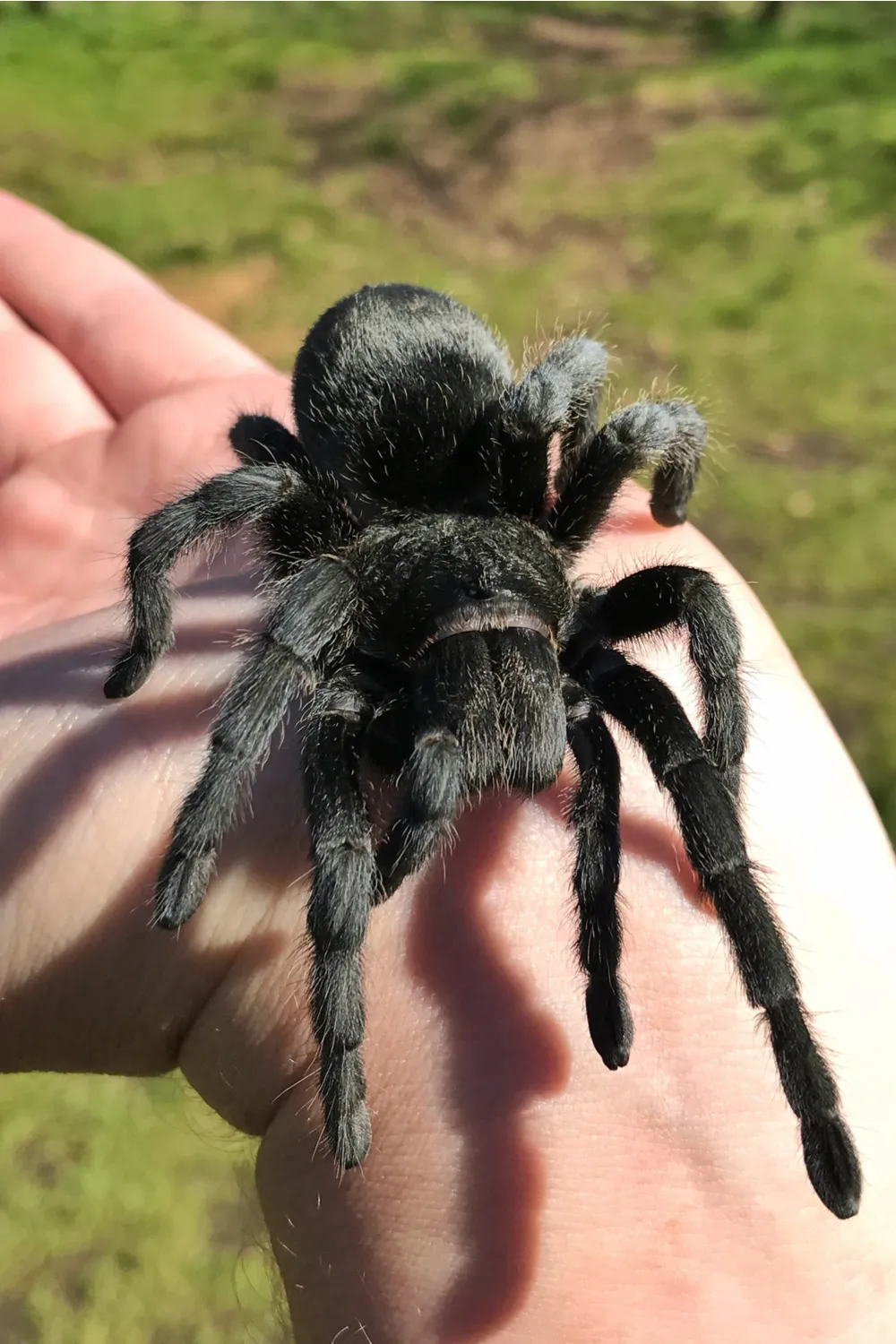
The substrate in the enclosure serves several important purposes: it provides a comfortable surface for the tarantula to walk on, helps regulate humidity, and allows the tarantula to burrow. A suitable substrate for a Brazilian Black Tarantula includes a mix of peat moss, coconut fiber, and a small amount of vermiculite or sphagnum moss. The substrate should be deep enough, usually 4-6 inches, to allow for burrowing. Decorations can enhance the enclosure and provide enrichment for your tarantula. Include a hide, such as a piece of cork bark or a pre-made tarantula hide, for your tarantula to retreat to and feel secure. Artificial or live plants can also be added to provide a more naturalistic environment, but ensure any live plants are non-toxic. Avoid sharp objects or anything that could potentially injure your tarantula. Always ensure the enclosure is clean and free of any harmful chemicals.
Temperature and Humidity
Maintaining the correct temperature and humidity levels is crucial for the health and well-being of your Brazilian Black Tarantula. The ideal temperature range is between 75-85°F (24-29°C). You can use a heat mat or a low-wattage heat lamp to maintain the desired temperature. Place the heat source on one side of the enclosure to create a thermal gradient, allowing the tarantula to regulate its body temperature. Humidity levels should be kept between 65-75%. You can monitor humidity using a hygrometer. Achieve the correct humidity by misting the enclosure with dechlorinated water once or twice a week, depending on the ventilation and the substrate used. Avoid excessive humidity, as it can lead to mold growth and other health issues. Regularly check the temperature and humidity and make adjustments as needed to ensure optimal conditions for your tarantula.
Feeding Your Brazilian Black Tarantula
What to Feed
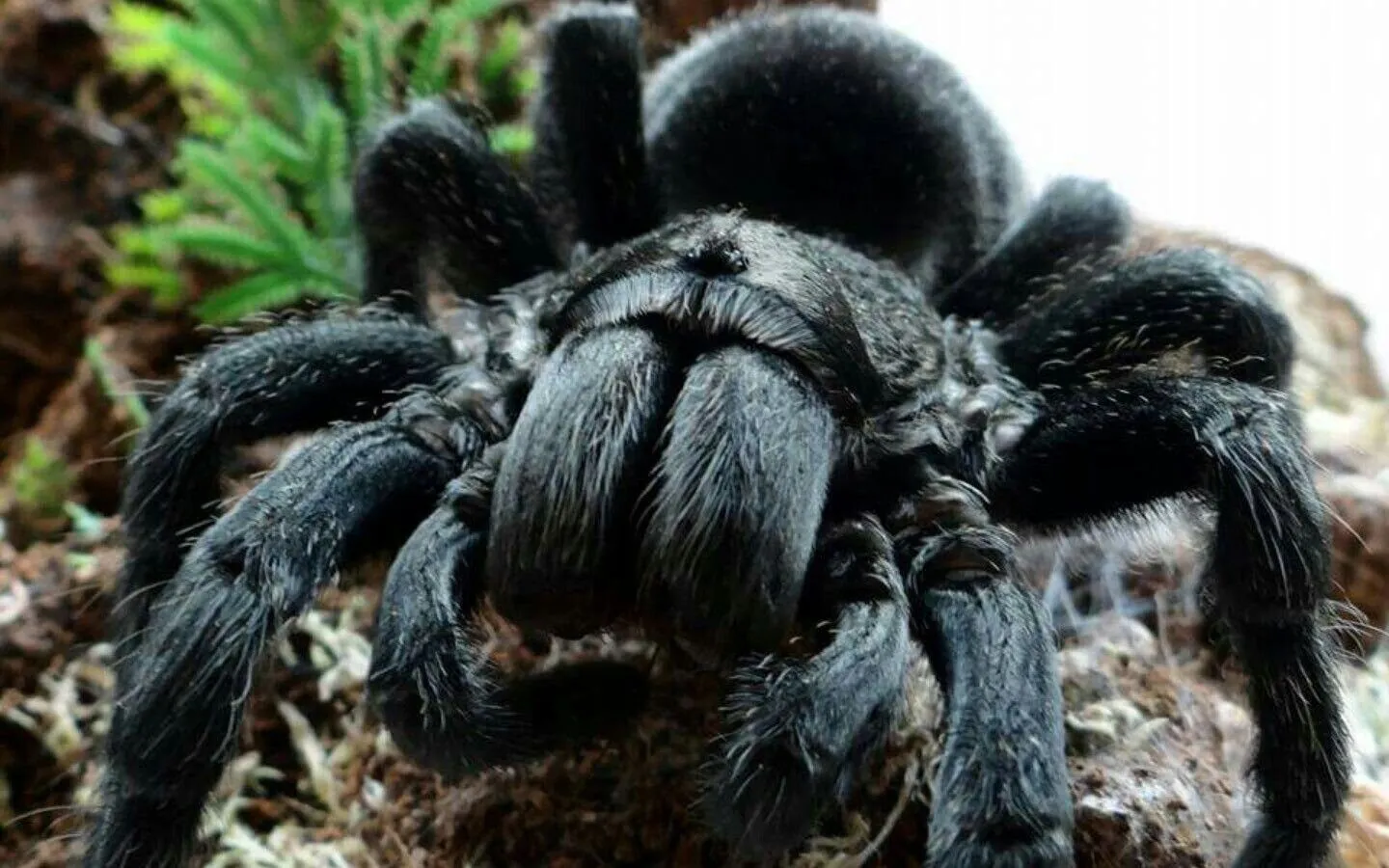
The Brazilian Black Tarantula is a carnivore, and its diet should primarily consist of live insects. Suitable food items include crickets, roaches, mealworms, and, occasionally, small invertebrates. The size of the prey should be appropriate for the tarantula’s size, ensuring it can be easily captured and consumed. Avoid feeding your tarantula insects that are larger than its body. Always ensure that the feeder insects are gut-loaded before feeding them to your tarantula. Gut-loading involves feeding the insects nutritious food for at least 24 hours before offering them to the tarantula, which increases their nutritional value. Avoid feeding wild-caught insects, as they may carry parasites or pesticides. Ensure the food items are free of any chemicals or harmful substances.
Feeding Frequency
The feeding frequency of your Brazilian Black Tarantula depends on its age and size. Spiderlings should be fed more frequently, typically 2-3 times per week. As they grow, you can reduce the feeding frequency. Adult tarantulas can be fed once every 1-2 weeks. Observe your tarantula’s abdomen; a plump abdomen indicates it is well-fed, while a thin abdomen suggests it may need more food. Remove any uneaten food items within 24 hours to prevent them from stressing the tarantula or creating an unsanitary environment. Always provide fresh, clean water to your tarantula. The feeding frequency might also be altered depending on the tarantula’s molting cycle; during pre-molt, they often refuse food.
Water and Hydration
Providing fresh water is essential for your Brazilian Black Tarantula’s health. Offer water in a shallow, stable dish that is accessible to the tarantula but also prevents it from drowning. Use dechlorinated water to avoid any harmful chemicals. Change the water regularly, typically every 1-2 days, to keep it clean. In addition to a water dish, you can mist the enclosure lightly, especially during molting periods, to increase humidity and provide a source of hydration. Monitor the substrate for dryness, as this can also indicate the need for more water. Ensure your tarantula always has access to clean water and that the enclosure’s humidity is appropriate for its needs. In dry environments, you might need to mist more frequently to maintain appropriate moisture levels.
Handling and Interaction
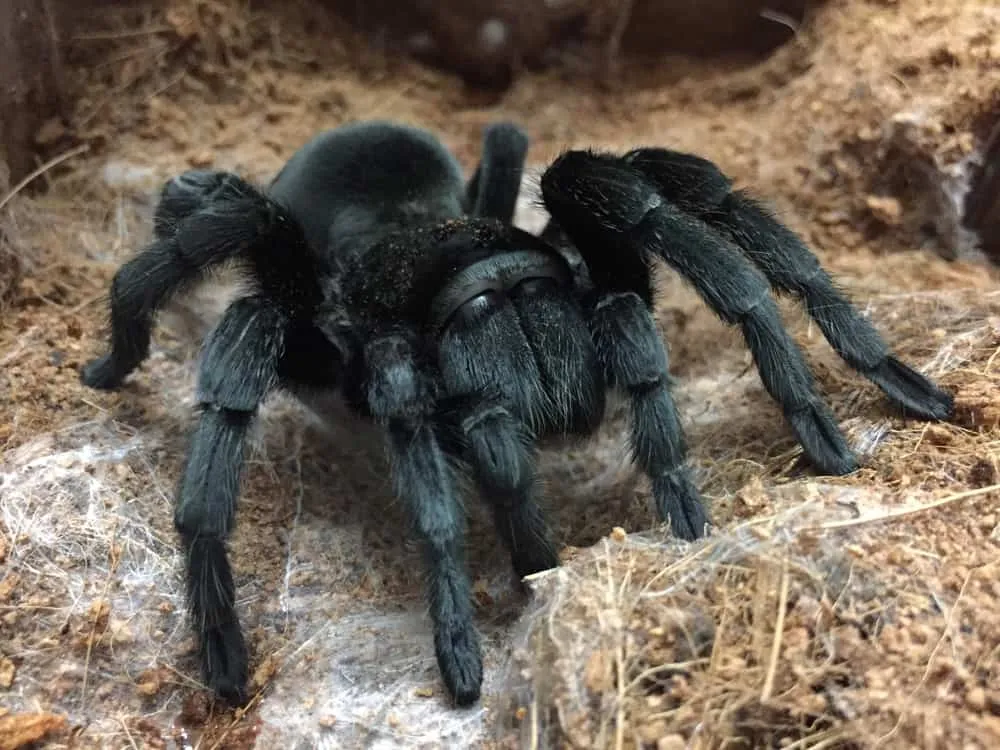
Safety Precautions
Handling a Brazilian Black Tarantula is generally not recommended unless absolutely necessary, such as for enclosure cleaning or medical care. These tarantulas are generally docile, but they can still bite if they feel threatened. Tarantula bites are not typically life-threatening to humans, but they can be painful and cause localized swelling and discomfort. If you must handle your tarantula, do so cautiously and gently. Avoid sudden movements that could startle the tarantula. Always handle the tarantula over a soft surface, such as a bed or a couch, in case it falls. Wash your hands thoroughly before and after handling the tarantula. Be aware of the tarantula’s behavior and body language; if it appears agitated, leave it alone. It is advisable to handle tarantulas as little as possible to avoid stressing them.
Understanding Tarantula Behavior
Understanding the behavior of your Brazilian Black Tarantula can help you provide better care and avoid potential issues. These tarantulas are generally nocturnal, meaning they are most active during the night. They may spend most of their time hiding in their burrow or hide. Observe your tarantula’s behavior to gauge its health and well-being. A healthy tarantula will have a good appetite, be active at night, and exhibit normal molting cycles. If your tarantula stops eating, becomes lethargic, or shows other unusual behaviors, it could indicate a health issue. Research the specific behaviors of your tarantula, recognizing signs of stress, such as a defensive posture (raising its front legs or showing its fangs), and avoid provoking it. Learn to differentiate between normal behaviors and signs of illness or distress to provide prompt and appropriate care.
Health and Common Issues
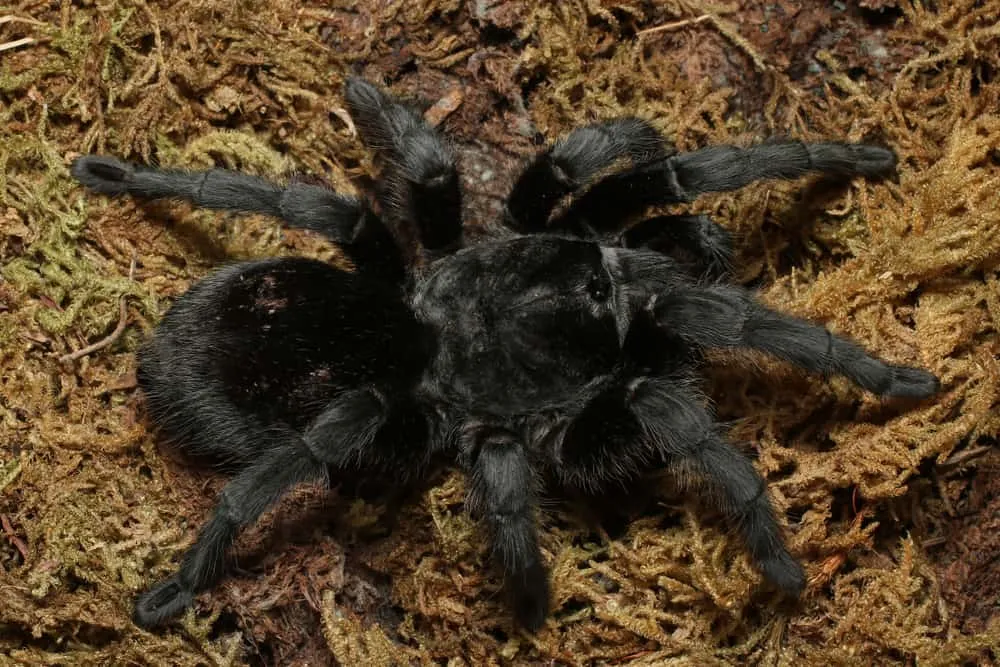
Signs of Illness
It’s important to be aware of potential health issues and how to identify them. Common signs of illness in Brazilian Black Tarantulas include loss of appetite, lethargy, and unusual behavior. Look for other symptoms, such as a swollen abdomen, loss of coordination, or difficulty moving. Check for physical abnormalities, such as lesions, discoloration, or parasites. Inspect the enclosure for mold growth or other issues that could be affecting your tarantula’s health. If you suspect your tarantula is ill, it’s crucial to seek advice from an experienced tarantula keeper or, ideally, a veterinarian experienced in exotic animals. Early detection and intervention can often prevent serious health problems. Maintain a clean enclosure, provide a balanced diet, and ensure the proper environmental conditions to minimize the risk of illness. Watch for signs of mites or other parasites.
Preventative Measures
Preventative care is key to keeping your Brazilian Black Tarantula healthy. Maintaining a clean and sanitary environment is crucial. Regularly clean the enclosure, removing any uneaten food, shed exoskeletons, and waste. Provide a balanced diet with nutritious feeder insects and fresh water. Ensure the appropriate temperature and humidity levels. Quarantine new tarantulas for a period of time to observe them and prevent the spread of any potential illnesses. Avoid handling your tarantula excessively, as stress can weaken its immune system. Learn to recognize signs of illness early, and consult with an expert when needed. Regular observation and preventative measures will greatly increase the chances of a long, healthy life for your Brazilian Black Tarantula. Always wash hands before and after handling the tarantula.
Breeding Brazilian Black Tarantulas
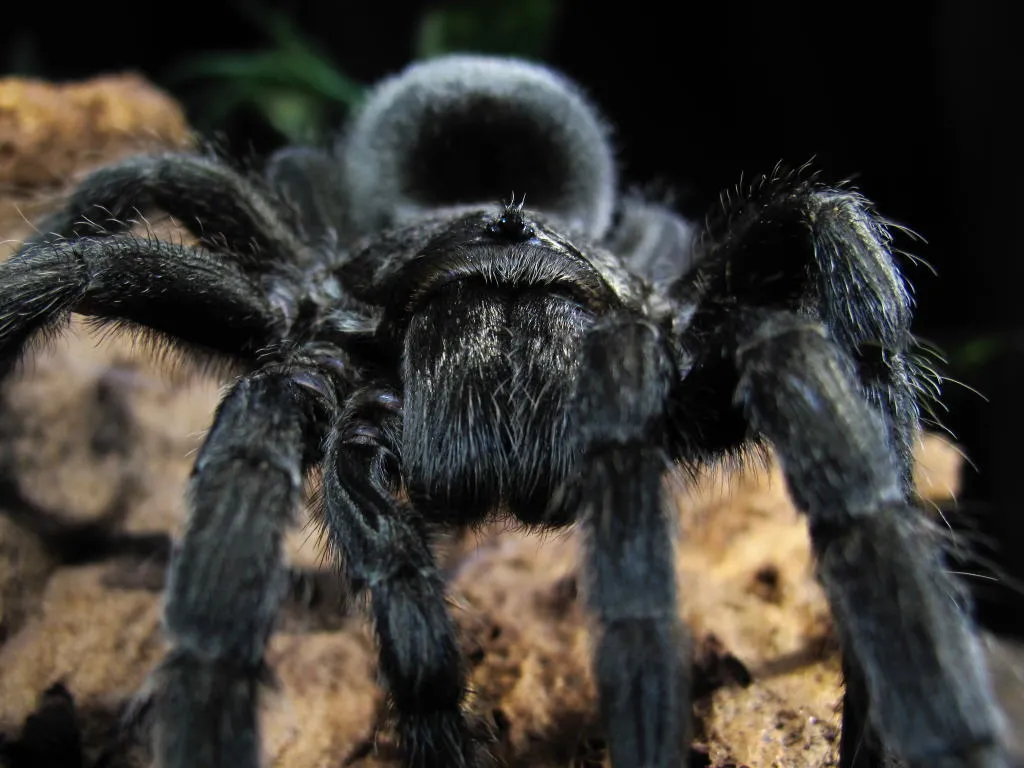
The Breeding Process
Breeding Brazilian Black Tarantulas is a rewarding but complex process that requires experience and careful planning. The first step involves sexing your tarantulas. Mature males have tibial hooks, which are used to hold the female’s fangs during mating, and bulbous pedipalps. Female Brazilian Black Tarantulas will need to be in good health, and of breeding age. The male and female are introduced under controlled conditions, and the male will typically initiate the mating ritual. If the female accepts the male, mating will occur. After mating, the female will typically create an egg sac. The egg sac is removed and incubated. The eggs will hatch into spiderlings, which require specialized care. Successful breeding requires significant knowledge and dedication, and is often best attempted by experienced tarantula keepers.
Caring for Spiderlings
Caring for spiderlings involves providing a suitable environment and appropriate food. Spiderlings are small and vulnerable, requiring meticulous care. They should be kept in individual containers or communal enclosures, depending on their size. The enclosure should be appropriately sized and provide the right temperature and humidity levels. Feed spiderlings small, flightless fruit flies or pinhead crickets. Make sure to provide water. Spiderlings grow quickly and require frequent feeding and careful observation. Maintain a clean enclosure, and monitor their health and growth. Spiderlings are delicate and require careful handling. The success rate of raising spiderlings depends on providing adequate food, temperature, humidity, and maintaining a clean environment. Providing appropriate housing will ensure the spiderlings thrive.
